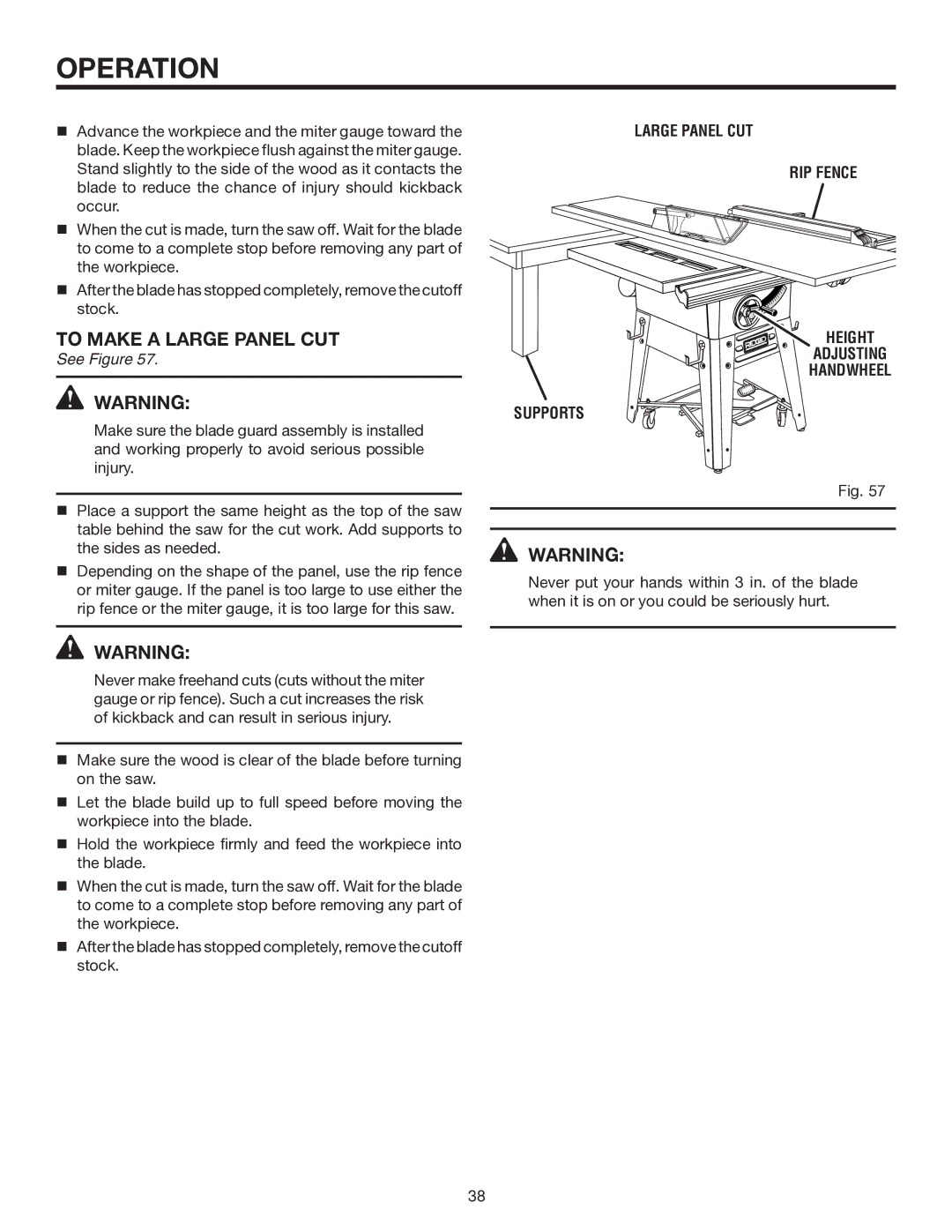
OPERATION
Advance the workpiece and the miter gauge toward the blade. Keep the workpiece flush against the miter gauge. Stand slightly to the side of the wood as it contacts the blade to reduce the chance of injury should kickback occur.
When the cut is made, turn the saw off. Wait for the blade to come to a complete stop before removing any part of the workpiece.
After the blade has stopped completely, remove the cutoff stock.
TO MAKE A LARGE PANEL CUT
See Figure 57.
![]() WARNING:
WARNING:
Make sure the blade guard assembly is installed and working properly to avoid serious possible injury.
Place a support the same height as the top of the saw table behind the saw for the cut work. Add supports to the sides as needed.
Depending on the shape of the panel, use the rip fence or miter gauge. If the panel is too large to use either the rip fence or the miter gauge, it is too large for this saw.
![]() WARNING:
WARNING:
Never make freehand cuts (cuts without the miter gauge or rip fence). Such a cut increases the risk of kickback and can result in serious injury.
Make sure the wood is clear of the blade before turning on the saw.
Let the blade build up to full speed before moving the workpiece into the blade.
Hold the workpiece firmly and feed the workpiece into the blade.
When the cut is made, turn the saw off. Wait for the blade to come to a complete stop before removing any part of the workpiece.
After the blade has stopped completely, remove the cutoff stock.
LARGE PANEL CUT
RIP FENCE
HEIGHT
ADJUSTING
HANDWHEEL
SUPPORTS
Fig. 57
![]() WARNING:
WARNING:
Never put your hands within 3 in. of the blade when it is on or you could be seriously hurt.
38
